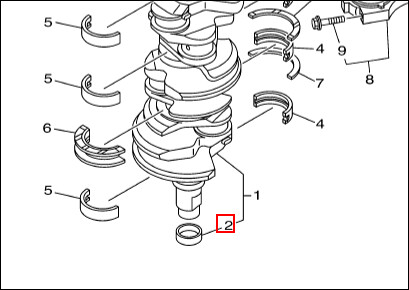Originally posted by rodbolt17
View Post
Where do you get these kits? How do you select proper kit? What are the instructions to install them properly? do you use one with a "flare" at one end, or do you use a "straight" one?
Does Yamaha sell these kits or not? If so, is the kit made for a particular model (Crankshaft diameter where meets oil pump seal)? Or is it recommended you measure the diameter in several axes to select proper size sleeve?
If not sold by Yamaha, I would think by bearing/seal supplier, are we talking about SKF brand, or is there another brand? Apparently these were made by a company, CR Seals, and SKF bought them out. There is a "****" line, would they be worth extra cost?
Here are some links on these:
http://www.skf.com/binary/26-128020/...edi-Sleeve.pdf
http://www2.chicago-rawhide.com/PDF/...lation_50A.pdf




Comment